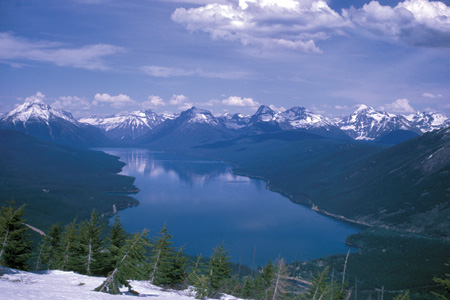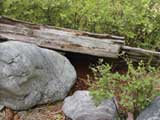Precious Assets
 |
| Figure 7.6: Lake McDonald/Glacier National Park. Source: National Park Service |
The quality of the watershed’s natural environment is our chief asset and is driving economic demand. Scenic lands and clean air and water are tangible elements of this asset. Aside from the many wilderness areas and scenic lakes and rivers, the watershed encompasses portions of Glacier National Park and is the southern gateway to Waterton Lakes National Park, which together form Waterton-Glacier International Peace Park. The watershed is also part of the Crown of the Continent ecosystem, one of the premier mountain regions of the world. The Flathead Indian Reservation comprises the southwest quarter of the watershed. These areas are unique components of our landscape and economic vitality. The beauty, wildlife, and recreational opportunities bring U.S., Canadian, and global visitors to the parks and the surrounding communities and attractions. The Crown of the Continent attracts individuals, educators, researchers, tribes, agencies, and organizations in a quest to comprehend, appreciate, enjoy, and preserve this culturally and ecologically important place.
Developments such as lodges, roads, railways, ski areas, and golf courses widen the appeal and increase the value of and accessibility to the natural assets of the watershed. The amenities of public lands and the open spaces between our towns and cities attract people and businesses. But access by road, rail, and air provides an important connection to metropolitan areas that enables an infrastructure for retention and economic growth. With an impressive array of technologies that enable businesses to communicate with and provide services to customers around the globe from almost any location, workers are now freer to move their homes and businesses to places with greater natural characteristics like the Flathead Watershed. Many, but not all of our small communities are effectively served by broadband and cell service.
Our economy is largely stimulated by an influx of new residents. Many people come to enjoy the natural beauty and the small town friendliness. Some visitors end up buying or building seasonally occupied second homes. Those who choose to make the Flathead their full-time home help to build cultural diversity and add vibrancy to their local communities. The value to newcomers of our natural assets is quantifiable by this in-migration and its economic impact on the watershed.
The national recession of the early 1980s reverberated through the Flathead Watershed, particularly stressing resource industries such as wood products. But the area experienced a remarkable turnaround in the late 1980s. The 1990s saw dramatic growth in healthcare, personal services, construction, and retail trade. The influx of new residents through the 1990s and early 2000s brought mostly people in their early 40s through mid-60s, a cross-section of the large and influential “baby boomer” group. Many of these newcomers joined the work force, but others brought their non-labor investment and social security incomes with them.
“If you would like to know the value of money, go and try to borrow some.”
- Benjamin Franklin, 1706 - 1790
The most recent national recession—beginning in 2008—hit Flathead and Lake Counties and the Flathead Reservation hard, but the communities of the Flathead Watershed are adjusting to new realities and are poised for eventual growth. We are fortunate that poverty rates for many of our areas are below state and national averages, and the percentage of our population aged 25 and older with high school diplomas is higher than state and national averages. Unfortunately, Tribal people in the watershed experience higher than average unemployment and receive fewer high school diplomas. However, the Confederated Salish and Kootenai Tribes are working to increase educational attainment and employment for their members through job training and education advocacy programs, as well as college scholarships for high school graduates.

